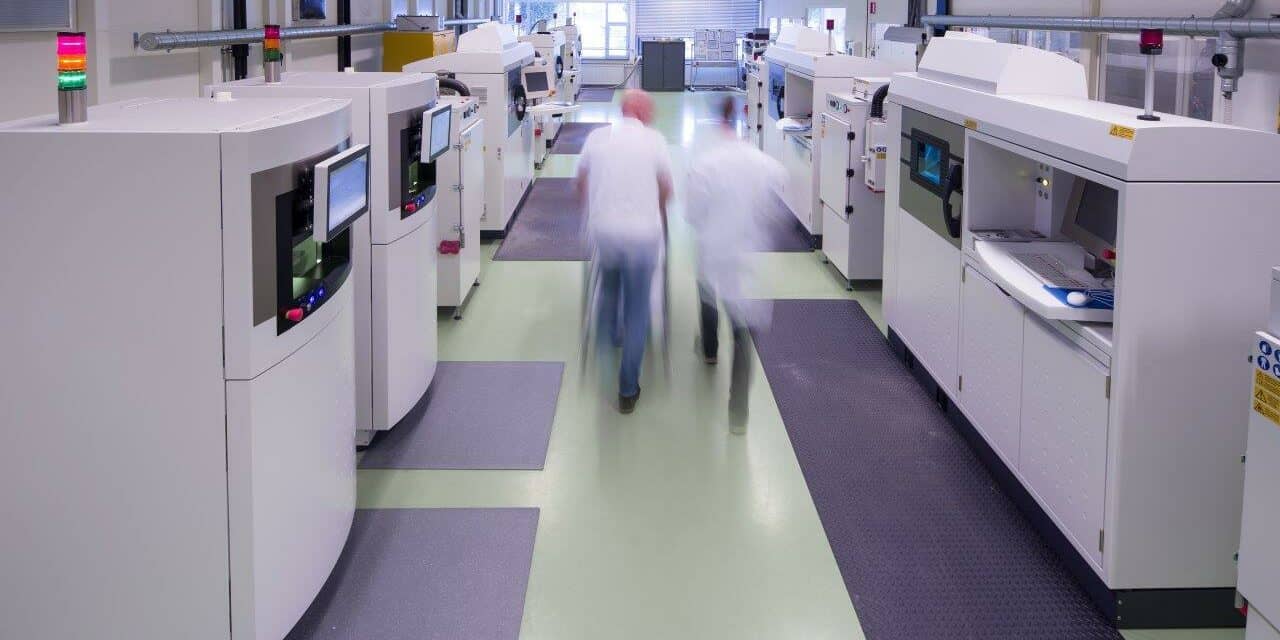By Cameron Riley
Not too long ago, 3D printing, or additive manufacturing, was a technique in search of a purpose. While many people speculated about the possibilities for its use—ranging from food production to creating art—3D printing tended to capture the imagination of dreamers, rather than the minds of practical manufacturers around the world.
Yet, when additive manufacturing—a technique that creates various items by melting metal grains layer upon layer based on a CAD model—is combined with the right material and application, possibilities for its use shift from the fanciful to the practical. For example, some of the first applications of additive manufacturing was the creation of tools and prototypes. Compared to traditional product design, using additive manufacturing often helps manufacturers explore multiple redesign options more cost-effectively.
In addition, when manufacturers require just a small amount of a tool, part, or product, 3D printing meets that need without creating distractions from a company’s primary manufacturing processes. There is less need to re-configure or interrupt production lines for smaller batch sizes.
The recent supply chain crises also bolstered the case for additive manufacturing, as manufacturers recognized that it could be used to create components close to home in the quantities required, rather than relying on unpredictable shipping of components from distant shores. In addition, it is easy and cost-effective to add new products to additive manufacturing lines, because the only requirement is that the components fit in the production chamber of the printer and can be created with the same material.
Three Ways Additive Manufacturing Supports a Sustainable Future
Today, savvy manufacturers understand that with the right combination of material, application, and process, 3D printing is a viable and valuable approach to mass production. As we explore possibilities, we have discovered another significant advantage: sustainability. Additive manufacturing supports the environment in three ways: lower energy costs, less waste, and streamlined waste processing.
Lower Energy Costs
Energy consumption is a large component of manufacturing. Even if a product is deemed “environmentally friendly,” the materials and processes that are required to create it may be far less “friendly.” Because additive manufacturing consumes less energy than traditional manufacturing, it creates a sustainability value chain, reducing the environmental footprint end to end.
In fact, one study concluded that the use of additive manufacturing will decrease global energy use by as much as 5%-27% by 2050. Another way that additive manufacturing lowers energy costs is that it can be used to create more energy-friendly products, such as lightweight components for aerospace that require less fuel.
Less Waste with Additive Manufacturing
Additive manufacturing may also reduce waste. Products are translated directly from CAD models, decreasing potential waste from using multiple prototypes to rework a design. In addition, the additive process delivers material efficiency, because items are “built” by adding layer upon layer, rather than by trimming away excess materials.
When a material with high purity is used, this material efficiency is even greater. For example, one application in the medical market is anti-scatter grids for CT systems.
These products have been redesigned for 3D printing in pure tungsten, using a technique called laser powder bed fusion. Because the grids are built with pure tungsten, any unused material or out-of-spec products can be recycled without the necessity of removing contaminants. This is impactful because removing contaminants consumes energy and often adds cost. Even in cases in which an alloy is required, tungsten’s high melting point makes it easier to remove materials with a lower melting point.
Streamlined Waste Processing
Additive manufacturers also can streamline waste processing to decrease their consumable waste footprint. Here at Dunlee, we already recycle 100% of tungsten powder. Now. we want to close the loop completely, so that out-of-spec products can be given directly back to suppliers to be turned into virgin powder to be reused.
When this closed-loop recycling is achieved—converting out-of-spec products to raw material indefinitely—our industry will greatly contribute to decreasing the consumption of natural resources and avoid harm to the environment, all without impacting the quality of the products produced.
Ultimately, more sustainable manufacturing is necessary for the future success of medical product manufacturing and for the health of our planet. We need to be smarter about responsibly using our natural resources and investigate ways to conserve energy along the entire production chain. As a flexible, nimble, and sustainable process, additive manufacturing is a solution that moves us in the right direction.
Cameron Riley is a production engineer in R&D at Dunlee. Questions and comments can be directed to 24×7 Magazine chief editor Keri Forsythe-Stephens at [email protected].





